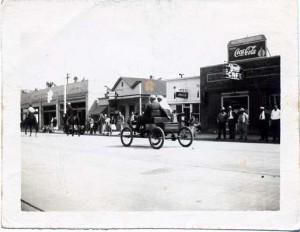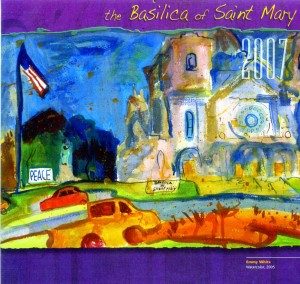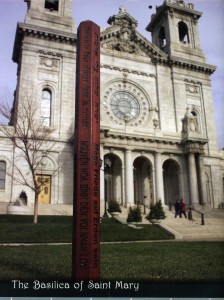#57 – Dick Bernard: The Politics and Practice of Race
The New York Times (NYT) “Breaking News Alert” came in at 3:03 PM ET on Friday, July 24, 2009. The headline: “Obama Says He Regrets His Language on Gates Arrest“.
Anyone stopping by this internet space knows what the flap is about.
There is nothing so sacred to a political figure these days as “staying on message”. President Obama could regret his final remarks at the news conference on Wednesday even if for no other reason than it deflected news from his main message on health care reform.
Personally, I think President Obama’s statement and his anger and the defense of his friend were appropriate and right on, and I hope the statement in the NYT release that “Mr. Obama said he had talked to the arresting oficer and hoped the case could become “a teachable moment” to be used to improve relations between minorities and police officers” is a substantive statement.
I have no beef with police, generally. They have a generally difficult job. Having said that, police do screw up, and screw up very badly, and knee-jerk support of the police no matter what is uncalled for. As for non-white “others” like Professor Gates, generally they are not cut any slack. If a mistake is made in their arrest, most often it comes to light long after the fact, if at all. On the one hand, there seems a presumption of innocence for the police; on the other, a presumption of guilt for others, especially non-white.
This issue is considerably closer to my mind than it might otherwise be because last week I was involved in an intercultural conference whose venues included a rural ND Catholic Church basement, and a Community College on an Indian Reservation. There were a number of times when I felt distinctly uncomfortable to be a white man, solely because of what I symbolized and represented. (The feeling was embarrassment, and, perhaps, helplessness…what has happened, has happened. I benefitted from being part of a privileged class, I learned its ways, and it is likely impossible to move completely past it.)
Involved in the conference were a number of people who were called “Africans”, because that’s what they were. They were likely better educated than myself; they were there because French was their first language; they were all extraordinary people. But when they came into the Church basement in rural North Dakota there was, among the assembled locals, well, you know: “What do I say?” “Who are they?” That kind of thing. (It evolved into a good discussion, and church lunches are always good!)
At the conference, at Turtle Mountain Community College http://www.turtle-mountain.cc.nd.us/, the focus was on intercultural relationships between French-Canadians, Metisse (in the old days, “half breeds”, “mixed blood”) and Native Americans (“Indians”, “natives”, “indigenous”), there was also tension: questions not asked; questions asked but not answered…. The steps to honest dialogue are slow and halting.
The Metisse hero, Louis Riel, was hanged in Canada in 1885, and for years was a reviled symbol of a failed revolution; today he is a cultural icon in the same society that considered him a bitter enemy. Apparently there is a Louis Riel Day in today’s Manitoba, much as there is a Martin Luther King Day in the U.S. http://en.wikipedia.org/wiki/Louis_Riel
The “Indians” on the Turtle Mountain Reservation have a casino, which brings good and bad to their society, and they have a confidence and assertiveness which can be uncomfortable. It happens that way when attempts are made to level playing fields. The assertive minority can be assumed to be “uppity”. For the dominant culture, uppity would be called confidence; and, of course, white males have been taught that our “place” is superior.
I am confident that as a society we are moving away from the worst of the racist aspects that have so long identified us. But we have a long, long, long way to go. The incident in Cambridge, and President Obama’s response highlight this.
Change will not be easy – it never is. I remember a long ago handout at a conference. It was called the “Change Curve”, and it said that on the way to something better than the status quo “steady state”, the road is difficult. In fact, in the early going things seem to be getting worse than better (think routine things like quitting smoking, or losing weight….). Persistence brings good results, but it takes persistence.
Whatever happened in Cambridge MA in a residential neighborhood has become world news.
To me, that occasion should be greeted as an opportunity to deepen and intensify the dialogue on race matters in this country.
Update: July 31, 2009
Yesterday, July 30, the President, the Professor, the Policeman and the Vice-President met at the White House. The same day, the woman who had called 9-11, Lucy Whalen, made a public appearance. The recording of her initial call has been released. She never mentioned race in her call, which was a very calm, simple reporting of only facts that she could observe. It remains to be seen if the incident will be viewed as an opportunity for dialogue, or as an opportunity to attack, divert attention from other issues, and divide Americans. Now there is insistence that the lady also meet with the President; and complaints that she was not invited to the men-only meeting. These do not seem to originate with the woman, who comes across as simply a citizen who was trying to do what was right. Stay tuned.



